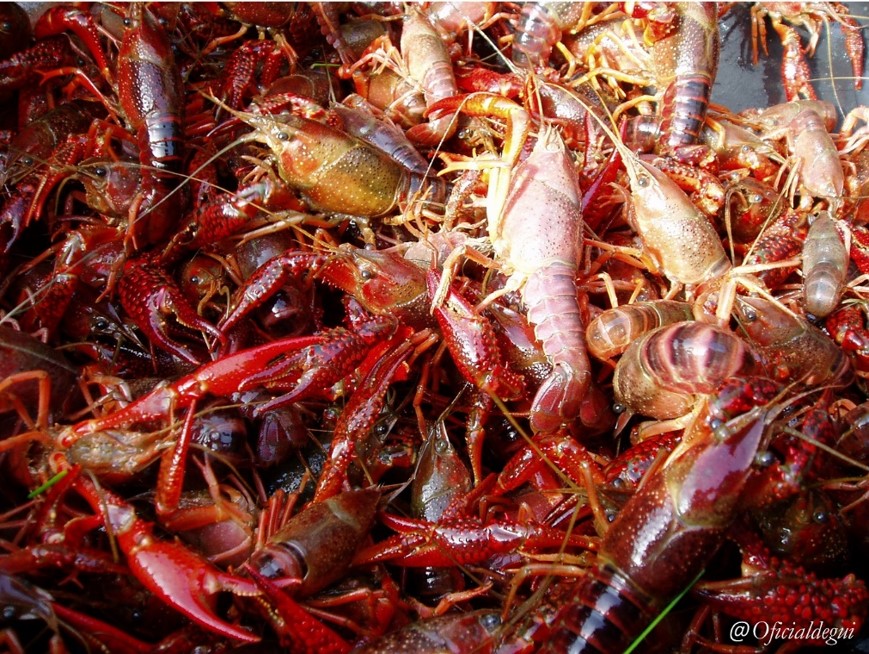The red swamp crayfish (Procambarus clarkii), native to the southern United States and north-eastern Mexico, is currently the most widely distributed crayfish globally, as well as one of the invasive species with most devastating impacts on freshwater ecosystems. Reconstructing the introduction routes of invasive species and identifying the motivations that have led to those movements is necessary to accurately reduce the likelihood of further introductions. In this study, the temporal evolution of the scientific literature on the red swamp crayfish was reviewed, georeferenced, time-explicit records of the species to provide a comprehensive understanding of its global expansion process were compiled and the potential role of biological supply companies in the translocations of the red swamp crayfish was evaluated. The interest of the red swamp crayfish in scientific research increased steadily since the beginning of the twentieth century until stabilization in the late 1960s. The number of studies related to the use of the red swamp crayfish in aquaculture showed two peaking periods: the years elapsed between 1970s to mid-1980s, and a continuous increase since the mid-1980s. Research on the red swamp crayfish as an invasive species has only been numerically relevant in recent times, with the number of studies increasing since the 2000s to represent currently around 25% of the scientific production dealing with this species. Although the first introductions of the red swamp crayfish took place in the 1920s, this synthesis highlights the rapid expansion of the species since the 1960s, arguably promoted by the emergence of crayfish industry, but other introduction pathways such as the mitigation of schistosomiasis, potential releases from research experiments, school science programs or pet trade cannot be ruled out. Currently, the red swamp crayfish is present in 40 countries of four continents and there is still potential for further expansion. Commercial suppliers from native (Louisiana) and non-native (California or North Carolina) areas in the United States have provided live-specimens of the red swamp crayfish for scientific research around the world for decades, suggesting that the invasion process of the red swamp crayfish could be more complex than generally assumed. Tracing the introduction routes of invasive species and understanding the motivations that have led to those movements of species is key to reduce their spread and the likelihood of future introductions. informacion[at]ebd.csic.es: Oficialdegui et al (2020) One century away from home: how the red swamp crayfish took over the world. Reviews in Fish Biology and Fisheries DOI: 10.1007/s11160-020-09594-z
https://link.springer.com/article/10.1007%2Fs11160-020-09594-z

 Las altas temperaturas están provocando que las lagunas y las marismas de Doñana pierdan agua rápidamente
Las altas temperaturas están provocando que las lagunas y las marismas de Doñana pierdan agua rápidamente




